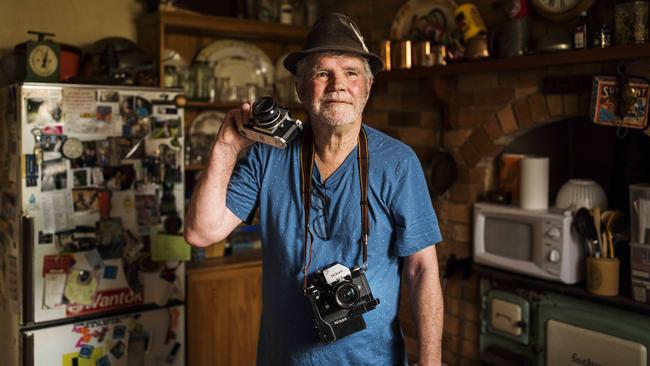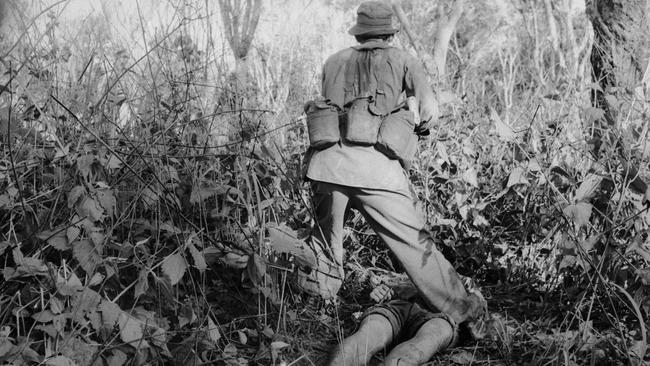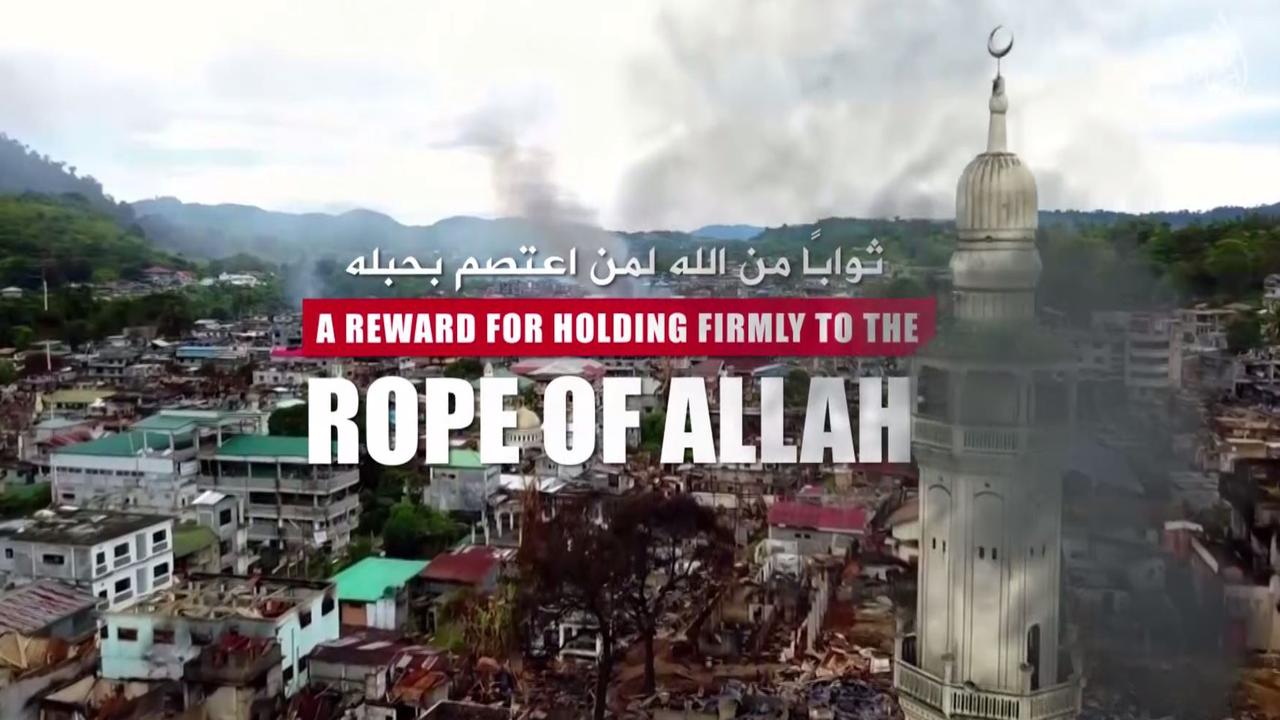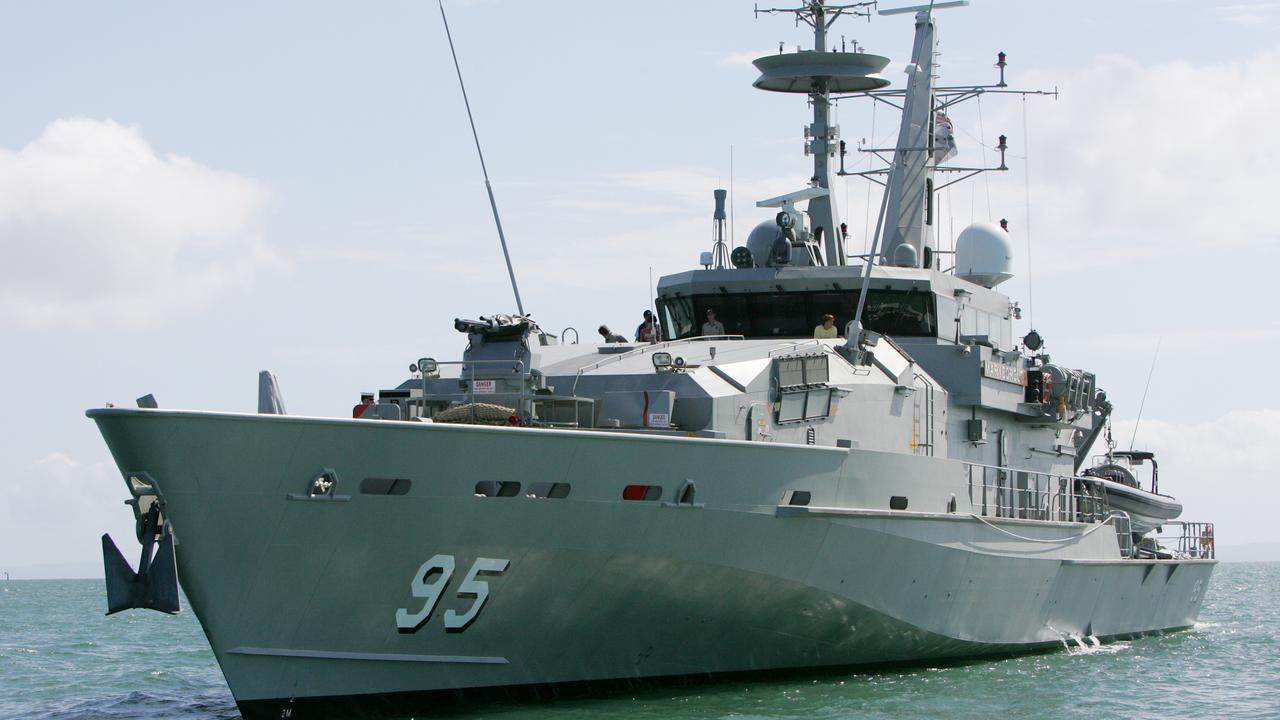Anzac Day: Sergeant Ray Curtis puts name to unknown Vietnam Digger
A Vietnam War Digger in a famous photo taken by Bill Errington has finally been identified.

The Digger peers nervously over the bushes. His uniformed figure contrasts starkly with the bare legs and sandalled feet of the Vietcong corpse between his legs.
The soldier’s identity is a mystery as his back faces the camera but the Australian Army combat photographer Bill Errington who captured the moment remembers him only too well.
“I crouched down really low to photograph him. I was worried he’d be shot in the head when he looked over the bushes,’’ he says.
“He was either stupid or brave to stick his head up like that making a target of himself.”
The image is one of many that Errington took that day in Vietnam, after choppering into what turned out to be Australia’s most deadly Vietnam series of actions known as the battle for Firebases Coral and Balmoral.
The photo is one of thousands of images from Vietnam in the archives of the Australian War Memorial that feature only the briefest of captions but pose so many questions.
Now on Anzac Day and as the 50th anniversary of the battle approaches next month, the Australian uncovered the story behind the image and it’s connection to what the participants believe is one of the most under recognised battles in Australia’s Vietnam military history.
Errington was a former press photographer who was so desperate to cover the Vietnam War he signed up to serve six years in the army as an official combat photographer.
In 1968, after two years of frustration snapping ceremonies and other unfulfilling military events in Australia, he was posted to Vietnam and set about documenting the diggers lives.
The job would later leave him burned out and disillusioned and suffering post traumatic stress disorder but the on the day he choppered in to capture images of the Australians at Firebase Coral around the 16th of May, 1968, he was suffering a different sort of emotional torment that would colour his work that day.
“We’d just been told our Lieutenant that Australian soldiers do not cry, they do not suffer defeat, they do not runaway. In other words there were to be no photos that showed the diggers in a bad way,’’ says the now 76-year-old Errington.
He arrived to see the carnage from a series of extraordinary attacks the under resourced Australian troops had repelled as a result of what the survivors believe was a result of a series tactical errors.
Two battalions from the 1st Australian Taskforce had been sent to act as a blocking force for enemy fighters which were believed to be streaming out Saigon and Bien Woa from the mini-Tet offensive and heading back to their bases near the Cambodian border.
The enemy was thought to be tired and dis-spirited after fighting in the capital about 50km away, but in reality, according to veterans, they were mostly members of a well equipped North Vietnamese Army regiment which was supposed to reinforce the Saigon fighters.

The Australians occupied a flat thickly grassed area in an old rubber plantation which they named Firebase Coral on May 12. They were attacked early the next morning before they had time to finish their defences.
Relentless NVA attackers swarmed their fighting holes at one point overrunning the positions of the 1 Royal Australian Regiment mortar platoon and the 102 Field battery howitzers.
Fearing the worst, the commander of the mortar platoon’s ordered his men to get down in the their scrapes and called in the taskforce’s artillery to fire upon their own position. The guns then blasted the position with a hail of darts that flared out like giant shotgun pellets and killed the enemy. Some of whom were left impaled on one of the guns by the darts.
The attacks which lasted for hours finally ceased as it became light leaving 11 Australians dead and 29 injured. The bodies of 52 North Vietnamese soldiers lay dead in and around their positions. Over the next few weeks the Australians were regularly attacked at night including a major assault on May 16 at 2.30am when a NVA force estimated to be three battalions strong attacked the positions. The enemy was beaten off with the assistance of armoured personnel carriers. Again the Australians suffered major casualties with five killed and 19 wounded.
It was the morning after this fight that Errington and several other official army press arrived to document the carnage.
The Platoon Sergeant of Delta Company Ray Curtis remembered their arrival because first place the photographers headed was to their position which was closest to the landing zone and it been the scene of the most recent fighting.
“They came straight to us because we had the last attack on us and there was about eight Vietnamese bodies up close to the wire,’’ he said.
He did not recall Errington personally but does remember that the photographer went out with a clearance patrol that probed about 50 metres out in front of the position to check the bodies and to see if the enemy were still around.
The body in Errington’s picture would have been a “Viet Cong”, a militia fighter whose jobs were mainly as battlefield clearance and guides, he said.
“They would come along after the battle and drag the bodies away and the weapons and get the wounded,’’ says Curtis, 73.
Asked about Errington’s tactics of photographing the digger at a low angle, Curtis agrees saying they were “sound when your only armed with a camera”.
He said the patrol returned to the wire without encountering any hostile fire.
Errington says he stayed in the base for a few days enduring some of the lesser night assaults that would go on for weeks.
At one point he recalls lying in the darkness trying to keep his camera equipment dry from the torrential rain when the hole he was sheltering in filled with water, floating his air mattress up to a point where his body was above the protection of the trench walls.
On another occasion he returned to find his trench destroyed by a direct hit, the only surviving possession being his enamel mug pierced by a piece of shrapnel.
His most traumatic memory was of finding Australian soldiers throwing dozens of NVA bodies into a mass grave. He said he went off and found the padre and asked the man if he would come to the grave and say a few words and be in a picture.
“He said to me. “Hang on they’ve killed lots of our boys. I’m not going to do that.”
“I was furious,’’ said Errington.
“I said to him, I hope you think about this every time you put your head on your pillow and I stormed off. I wasn’t in a good frame of mind then.”
The negatives of his images were sent back to the censors in Australia. He does not recall if any of saw publication in major newspapers or magazines as “we were in Vietnam and we didn’t know what got through”.
But he does recall when he only saw the patrol photo some 30 years later when he approached the war memorial seeking proof of his service as part of an application for his veterans benefits.
“I was quite upset. It brought back memories. I had a bad night and a bad day the next. Flashbacks and that sort of thing, I still get them now.”





To join the conversation, please log in. Don't have an account? Register
Join the conversation, you are commenting as Logout